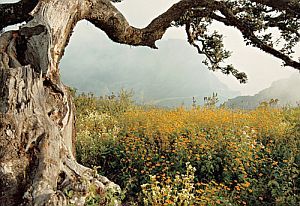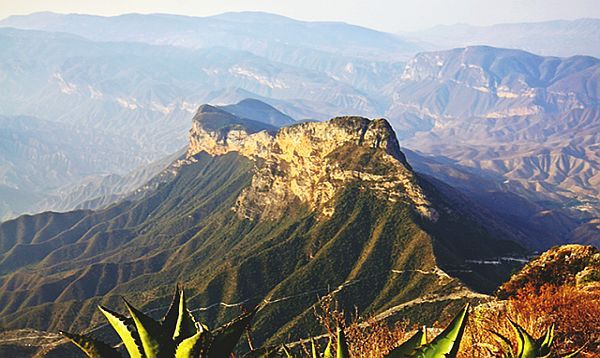Over the last several decades, Martha Isabel Ruiz Corzo has figured out dozens of ways to protect the Sierra Gorda, known as "The Green Iewel" of Mexico, through what she calls "participatory conservation." It takes locals getting involved in saving their beloved natural surroundings and helping them economically benefit in the process.
Earlier this year, the Mexican government put aside the mountains — roughly 4,500 square miles of the state of Querétero — as a biosphere reserve. What made the deal all the more remarkable was that it engaged some 34,000 people. Ruiz Corzo heads an alliance of five organizations, all devoted to the preservation of the biosphere reserve and the sustainable development of the area.
They’ve developed a variety of ways in which caring for the environment has also brought about returns for the people who lived there, including ecotourism, soil regeneration, a learning center, and research. The premise behind Ruiz Corzo’s efforts is that the mostly poor people who have lived in or near the Sierra Gorda for generations have more to lose if the natural habitat is destroyed but also vastly more to gain if her efforts at its preservation are successful.
For instance, some locals receive compensation for doing hydrological services, while others get paid for carbon storage and capture. All in all, there are 6 mechanisms by which residents of the biosphere zone can earn money by participating in conservation efforts.
Like many developing countries, much of rural Mexico is caught in a struggle between the dreams of environmentalists who want to preserve the country’s most beautiful places and the economic needs of huge numbers of poor people who have lived in those areas for generations. In the southern state of Chiapas, advocates for the rights of the indigenous people who have inhabited the region for millennia are often at loggerheads with environmental groups who claim that the presence of people — any people — is bad from an ecological perspective. Ruiz Corzo seems to have found a way to balance the needs of the two groups.
 |
Queretero state has its share of environmental ills. Roughly 15,000 acres of forest are mowed down each year, leading to massive erosion problems. Meanwhile, consistently high poverty rates have led to poor sanitation, which Ruiz Corzo lists as one of the principal causes of water pollution.
To combat the vicious cycle whereby poverty feeds bad practices that lead to more poverty and eventual environmental disaster, Ruiz Corzo has taken the long view and promoted education as the only viable means to bring about the kind of fundamental shift that will ultimately change attitudes for the better. Her alliance offers workshops in environmental awareness to some 17,000 children every month.
Ruiz Corzo said it took 16 years of constant struggle to bring the Kyoto Protocol of environmental protection to high-poverty areas, where economic growth would have normally led to extreme environmental degradation. In a recent TEDx (The Sapling Foundation's 'ideas worth spreading') speech, Ruiz Corzo said, "We have grounded Kyoto at the local, with easy rules, a robust product, very transparent, but we are not struggling with global rules anymore."
That’s not an easy accomplishment anywhere, but it’s especially remarkable in Mexico, where corruption is rife and environmental concerns are more often than not swept aside by developers eager to make a quick buck. "I belong to her. I belong to this wonderful, fragile biosphere," she told the TEDx audience.
Original Story


